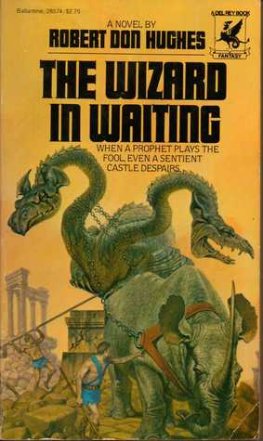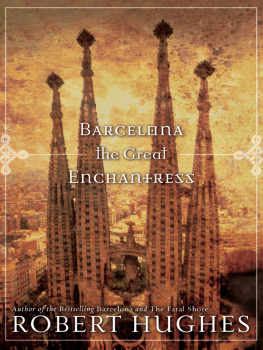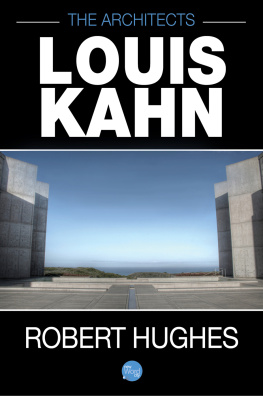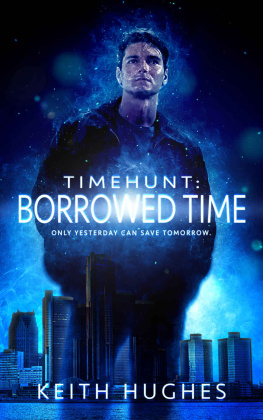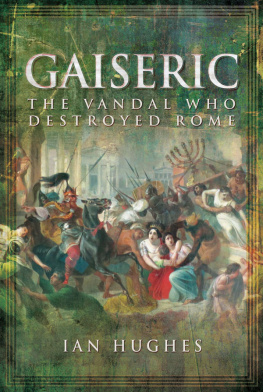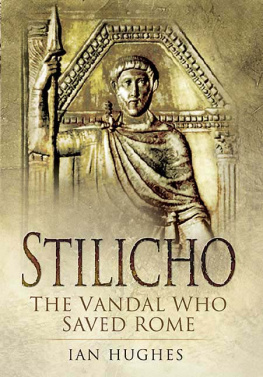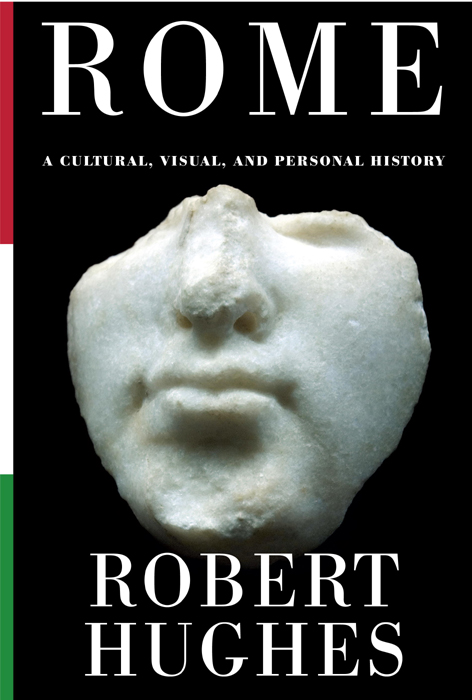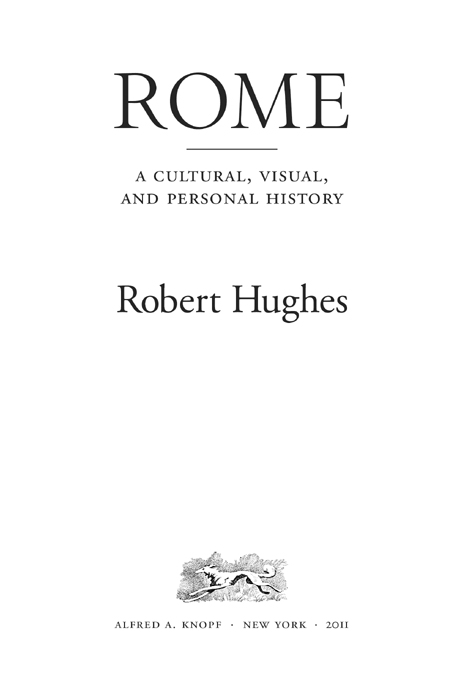ALSO BY ROBERT HUGHES
The Art of Australia (1966)
Heaven and Hell in Western Art (1969)
The Shock of the New (1980)
The Fatal Shore (1987)
Lucian Freud (1988)
Frank Auerbach (1990)
Nothing If Not Critical (1990)
Barcelona (1992)
The Culture of Complaint (1993)
American Visions (1997)
Goya (2003)
Things I Didnt Know (2006)
THIS IS A BORZOI BOOK
PUBLISHED BY ALFRED A. KNOPF
Copyright 2011 by Robert Hughes
All rights reserved. Published in the United States by Alfred A. Knopf, a division of Random House, Inc., New York, and in Canada by Random House of Canada Limited, Toronto.
www.aaknopf.com
Knopf, Borzoi Books, and the colophon are registered trademarks of Random House, Inc.
English translation of Giuseppi Bellis Lilluminazione de la cuppola courtesy of Anthony Merlino.
eISBN: 978-0-307-70058-2
Front-of-jacket image: Roman face, marble, first century B.C.E. Marafona/Shutterstock
Jacket design by Chip Kidd
v3.1
For Doris, with love, again
Contents

1
Foundation
2
Augustus
3
Later Empire
4
Pagans Versus Christians
5
Medieval Rome and Avignon
6
Renaissance
7
Rome in the Seventeenth Century
8
High Baroque (Bernini, Borromini, Etc.)
9
Eighteenth-Century Rome, Neo-Classicism, and the Grand Tour
10
The Nineteenth Century: Orthodoxy Versus Modernity
11
Futurism and Fascism
12
Rome Recaptured
Acknowledgments

The last and I daresay only book Ive written about a major city was published over twenty years ago. That book was Barcelona, a city Id visited frequently due to my longstanding friendship with the sculptor Xavier Corbero, and it was through his eyes that I discovered the Catalan gem that was to steal my heart and lure me back with its siren song, so magical and alluring. Several years ago, my literary agent, Lynn Nesbit, called on a bright, early spring day and proposed a book on the subject of Rome. Her enthusiasm and vibrant energy rhymed with the emerging greens of the early spring unfolding outside, making it impossible to decline. Lord Weidenfeld, the formidable publisher of Weidenfeld & Nicolson, London, had been conceptualizing this book for many years and decided it must be done and done as a complete history, to be called The Seven Hills of Rome. Being handed his vision of this project was a privilege and an honor of which I am eternally grateful.
Rome is a city where I have spent much time, but unlike Barcelona, I had not had the opportunity to live and breathe the air for months on end. My knowledge of the history came to me by my profession as a writer and critic of art. It was the visual language in my travels in and around the city that built the foundation for my historical reference, and in taking on this challenge my internal reservoirs could begin to flow into a cohesive stream of historyRome in chronology and through my own eyes, the eyes that have seen the priceless art and architecture, the structure of a city that, historically, will never be complete. Master craftsmen, artists, rulers, warriors, and social anthropologists, now long gone, bestowed the world with one of the greatest treasures known to man.
Early on, during one of my first research visits to Rome, I realized what a mammoth undertaking this book was to be, something that was not lost on my wife, Doris Downes. I am deeply grateful on many levels: for her support as a partner, her loyalty, her friendship, and her own knowledge of the city. Because of my compromised state of mobility, the effects of a car wreck in the Australian outback thirteen years ago, I relied heavily on her and on my many friends in Rome to help negotiate the sites and research facilities as well as the politics. For these noble tasks, I would like to thank Peter Glidewell, advisor for the Foundation for Italian Art and Culture (FIAC), who spent his lifetime in this city and seemed to know every coin in every fountain with his sophisticated views on what Rome had been and what it is today. He spent much time organizing my agenda in and around a city that is not and can never be disabled-friendly without razing every street of its paving stones. His knowledge and patience in working with me, as well as his loyalty, I will never be able to fully repay. In addition, I would like to thank my friends Alain Elkann and Rosy Greco for their hospitality in our visits to the city by offering their grace and generosity in providing me with a spectacular space in which to hang my hat, and to Lucio Manisco, my dear old friend and journalist in Rome.
Anyone who is familiar with my past acknowledgments knows that they are never complete without my thanking a major hospital and entire wing of specialists and interns. This time, the gong goes to Policlinico Umberto Primo, located within the city proper. Without their careful attention, I would not have been able to complete this book. I would also like to give my heartfelt appreciation to Doris, who, putting her own important work aside, flew back to Rome to navigate the medical labyrinth of this sprawling teaching hospital and managed for us a safe return back to New York.
I am deeply indebted to my indefatigable editors at Knopf. First, to Peter Gethers, a tireless and most talented editor, made this book entirely possible, along with Claudia Herr. I thank them for their patience and professionalism throughout this long process, as well as editorial assistants Christina Malach and Brady Emerson, production editor Kevin Bourke, jacket designer Chip Kidd, publicist Kathy Zuckerman, and my assistant Ian McKenzie. Nor could it have gone to print without the continued generosity of the New York Public Library in giving me access to the Allen Room, with its rare treasures, that helped to bring this book to life in so many ways.
In closing, I would like to thank my stepsons, Garrett and Fielder Jewett, for their love and encouragement during the years of writing intermixed with my many bouts of self-doubt that it would ever come to completion.
Prologue

I have eaten, slept, looked until I was exhausted, and sometimes felt as though I had walked my toes to mere stubs in Rome, although I have never actually lived there. I only ever lived outside the city; not on the mediocre periferia that grew up to accommodate its population surge in the fifties and sixties, but in places along the coast to the north, like the Argentario Peninsula. I quite often came into Rome itself, rarely for more than a week or two, and not often enough to qualify as a resident by paying rent to anyone but a hotel owner, or having a kitchen wall on which to permanently hang my wicker spaghetti-strainer, which remained in Porto Ercole.




